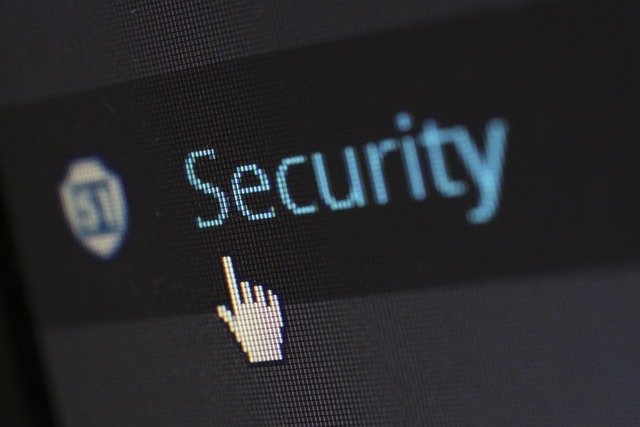Remote Device Management: Modern Access Control Solutions
Remote Device Management (RDM) has emerged as a critical component of modern cybersecurity infrastructure, enabling organizations to maintain control over their digital assets while supporting flexible work arrangements. As businesses increasingly rely on distributed workforces and cloud-based systems, implementing robust access management solutions becomes essential for maintaining security without sacrificing operational efficiency. Modern RDM platforms integrate advanced authentication methods, centralized control mechanisms, and adaptive security protocols to protect sensitive data across multiple devices and platforms.

What Are the Key Features of Modern Access Management Solutions That Enhance Security and User Convenience?
Modern access management solutions incorporate several advanced features designed to balance security requirements with user experience. Multi-factor authentication (MFA) serves as a foundational element, requiring users to provide multiple forms of verification before gaining system access. Single sign-on (SSO) capabilities allow users to authenticate once and access multiple applications seamlessly, reducing password fatigue while maintaining security standards.
Zero-trust architecture represents another crucial feature, treating every access request as potentially suspicious regardless of the user’s location or previous authentication status. Biometric authentication methods, including fingerprint scanning and facial recognition, provide additional security layers while streamlining the login process. Context-aware authentication analyzes factors such as device location, network security, and user behavior patterns to determine appropriate access levels automatically.
How Do Integrated Access Controls Streamline Digital Identities Across Multiple Platforms?
Integrated access controls create unified identity management systems that synchronize user credentials and permissions across diverse platforms and applications. This centralization eliminates the need for separate login credentials for each system, reducing administrative overhead and minimizing security vulnerabilities associated with password management.
Identity federation protocols enable seamless communication between different platforms, allowing user authentication data to be shared securely across organizational boundaries. Directory services integration connects RDM systems with existing enterprise infrastructure, ensuring consistent policy enforcement and user provisioning processes. Automated user lifecycle management streamlines onboarding and offboarding procedures, instantly updating access permissions when employees change roles or leave the organization.
API integration capabilities allow RDM solutions to connect with third-party applications and cloud services, creating comprehensive access control ecosystems that extend beyond traditional network boundaries.
What Role Does Adaptive Access Management Play in Supporting Remote Work and Flexible Business Operations?
Adaptive access management systems continuously monitor user behavior and environmental factors to adjust security requirements dynamically. These systems recognize typical usage patterns for individual users and flag unusual activities that might indicate security threats. Geographic location analysis helps verify legitimate access attempts while blocking suspicious login attempts from unexpected locations.
Device trust scoring evaluates the security posture of devices requesting access, considering factors such as operating system updates, antivirus status, and encryption compliance. Network security assessment ensures that connections originate from trusted networks or implement appropriate VPN protections. Time-based access controls restrict system access to appropriate business hours or specific time windows based on user roles and responsibilities.
Risk-based authentication adjusts security requirements based on the perceived threat level of each access request, requiring additional verification steps for high-risk scenarios while streamlining access for routine operations.
What Security Best Practices Should Organizations Consider When Implementing Modern Access Management Systems?
Implementing comprehensive access management systems requires careful attention to security fundamentals and industry best practices. Regular security audits and penetration testing help identify vulnerabilities and ensure system effectiveness. Privileged access management (PAM) controls restrict administrative access to critical systems, implementing additional oversight and monitoring for high-level permissions.
Encryption protocols protect data both in transit and at rest, ensuring that intercepted communications remain unreadable to unauthorized parties. Regular software updates and patch management maintain system security against newly discovered vulnerabilities. Comprehensive logging and monitoring systems track all access attempts and user activities, providing audit trails for compliance requirements and incident investigation.
Employee training programs ensure that users understand security policies and recognize potential threats such as phishing attempts or social engineering attacks.
What Are the Key Differences Between Traditional and Modern Access Control Methods in Terms of Usability and Security?
Traditional access control methods typically rely on static password-based authentication and perimeter security models that assume internal network traffic is trustworthy. These systems often require separate credentials for each application and provide limited visibility into user activities once authentication is complete. Legacy systems struggle to accommodate remote work scenarios and mobile device access, creating security gaps and user frustration.
Modern access control solutions implement dynamic, risk-based authentication that adapts to changing threat landscapes and usage patterns. Cloud-based deployment models provide scalability and flexibility that on-premises solutions cannot match. Advanced analytics and machine learning capabilities enable proactive threat detection and automated response mechanisms.
Contemporary systems emphasize user experience through streamlined authentication processes while maintaining stronger security through continuous monitoring and adaptive controls. Integration capabilities allow modern solutions to work seamlessly with existing infrastructure while providing migration paths for legacy applications.
Remote Device Management represents a fundamental shift toward more intelligent, adaptive security solutions that protect organizational assets while enabling productivity in distributed work environments. As cyber threats continue to evolve, investing in comprehensive RDM platforms becomes increasingly critical for maintaining competitive advantage and regulatory compliance. Organizations that implement these modern access management strategies position themselves to respond effectively to future security challenges while supporting flexible business operations.




